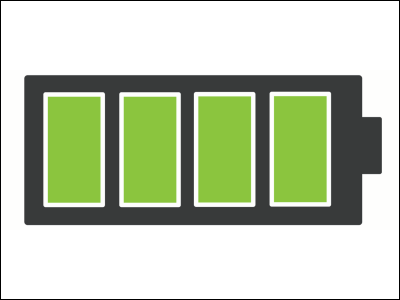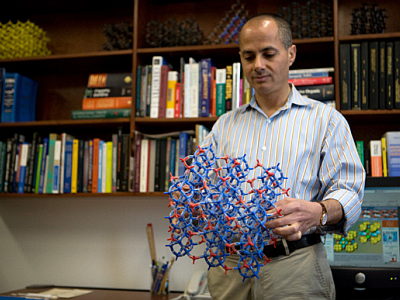A biofuel cell that can generate electricity from human sweat will be developed, and the possibility of charging wearable terminals even while sleeping

A group of engineers at the University of California, San Diego have developed a thin, flexible biofuel cell that can be worn on your fingertips to generate a small amount of electricity from human sweat. This biofuel cell is a valuable power source for wearable devices because it can generate power not only when the wearer is exercising and sweating a lot, but also when sleeping or sitting. There is a possibility of becoming.
A passive perspiration biofuel cell: High energy return on investment: Joule
Calling all couch potatoes: This finger wrap can let you power electronics while you sleep
https://techxplore.com/news/2021-07-couch-potatoes-finger-power-electronics.html
The biofuel cell announced this time is a very thin and flexible film that can be wrapped around your fingertips. By absorbing sweat with carbon electrodes, it can be converted into electrical energy. The electrode part is equipped with an enzyme to cause a chemical reaction of 'lactic acid and oxygen molecules contained in sweat', and a chip made of piezoelectric material is mounted under the electrode. This allows you to generate additional electrical energy by pressing with your finger on the film.

Lu Yin, who belongs to the engineering group at the University of California, San Diego, who developed a biofuel cell that can generate electricity from human sweat, said that the biofuel cell that he developed was 'unlike other devices that generate electricity from sweat. It's very practical because it doesn't require 'a lot of sweating situations such as exercise' or 'physical input'. With this film, wearable devices are more practical, convenient and blend into people's daily lives. It can be a real thing. '
By wrapping this film around your fingertips, you can use it as a power source for wearable devices. 'The goal of this film is to make wearables work naturally so that you don't have to think about batteries,' said Joseph Wang, a professor of nanotechnology at the University of California, San Diego. It was.

Biofuel cells generate electricity from the sweat that comes out of your fingertips. The fingertips are one of the most sweaty parts of the body, and because there are more than 1000 sweat glands on the fingertips, it is possible to sweat 100 to 1000 times more than other parts of the body. ..
'The reason I feel more sweaty in other areas than in my fingertips is because they aren't well ventilated. In contrast, my fingertips are constantly exposed to the air, so Sweat evaporates instantly, so it is possible to generate electricity efficiently by using it to generate electricity for the device instead of evaporating it, 'explains why installing a biofuel cell at your fingertips. doing.
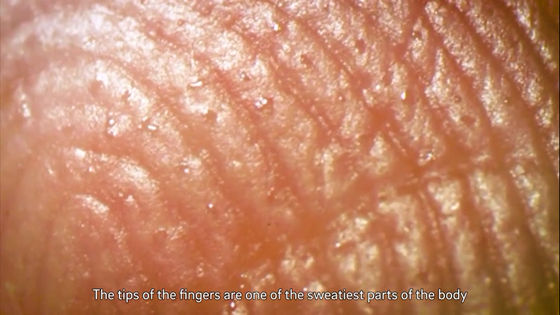
Film can generate electricity not only from human sweat, but also by pressing it lightly. Therefore, you can generate electricity by typing, clicking the mouse, playing the piano, inputting the Morse signal, etc. with the biofuel cell attached to your finger.
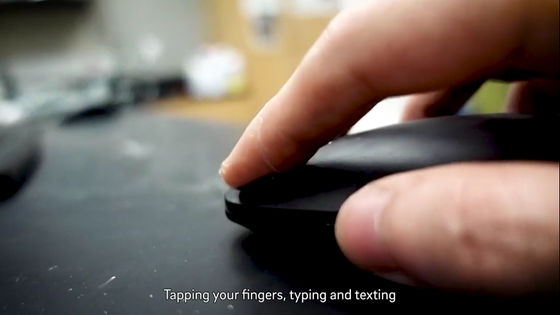
After sleeping for 10 hours with a film on one finger, the biofuel cell has succeeded in collecting about 400 millijoules of energy. This is enough energy to power the electronic clock for 24 hours. In addition, after one hour of typing and mouse-clicking with the film wrapped around the finger, the biofuel cell has succeeded in collecting about 30 millijoules of energy. By wrapping the biofuel cell film around all fingers, it is possible to generate 10 times more energy.
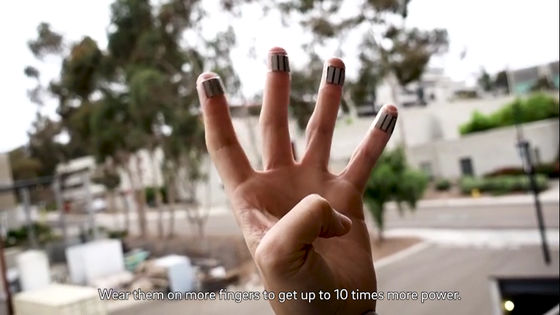
When the person wearing the film sweats or pushes the film, electrical energy is generated, which is stored in a small capacitor and supplied to the device as needed.
'Our goal is to make devices with biofuel cells practical. We want to show that this biofuel cell is more than just a cool thing that can generate a small amount of energy. It is also possible to use the energy actually generated from sweat to power electronic devices such as sensors and displays. '
A group of engineers aim to further improve this film to make it more efficient and durable, and in the future combine it with another type of generator to develop a new generation of wearable systems. It seems that he is considering that.
Related Posts:





